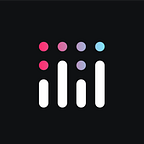3 Minimalist Dashboards with Great Style
“Dashboards have become popular in recent years as uniquely powerful tools for communicating important information at a glance. Although dashboards are potentially powerful, this potential is rarely realized,” says Steven Few, principal of the consultancy Perceptual Edge.
“The greatest display technology in the world won’t solve this if you fail to use effective visual design. And if a dashboard fails to tell you precisely what you need to know in an instant, you’ll never use it, even if it’s filled with cute gauges, meters, and traffic lights. Don’t let your investment in dashboard technology go to waste.”
Therefore, instead of presenting a vertical “freight train” of graphs and content at your next board meeting, craft a “virtual display of the most important information needed to achieve your objectives; consolidated and arranged on a single screen so the information can be monitored at a glance.”
Surprise and wow your colleagues at your next meeting by using Dash.
In this post, we show off three different Dash applications that can take your data presentation game to the next level.
1. CRM Salesforce with Dash
This dashboard allows you to instantly take your organization’s sales pulse.
Using the Salesforce API, you can set your sales data up to update automatically following each transaction. Use a heatmap to track sales opportunities through each stage, plot out leads by location in a choropleth map, or get a visual on your most effective lead sources.
2. Concentrated Content
This dashboard is a great example of how you can spice up your blog posts using Dash. Since Dash apps are 100% customizable, you can match your company’s theme easily.
Furthermore, your content is:
1. All in One Place: It is reported that web users spend 80% of their time looking at information above the page fold. That should be incentive enough to produce a compact article and reduce the scrolling that is necessary.
2. Social Media Gold: Bring your data to life and make an animated GIF of your dashboard for Twitter.
3. Downright Stylish: Dash apps use D3.js, the gold standard of interactive web graphics.
3. Natural Gas Well Production
Our final example showcases New York State’s natural gas well production data. The Dash app follows Few’s advice and “tells you precisely what you need to know in an instant.” Where is gas produced, and how much? The Dash app spectacularly accomplishes its goal of being a “virtual display of the most important information.”
If you liked this post, please consider sharing. If you’d like to learn how to make these Dash apps, visit the Dash Documentation. We have tutorials that show you how to build beautiful user interfaces for your analytical code, all in Python. To learn more about how companies are using Dash across different industries, keep an eye on our newsroom for case studies and user stories.
